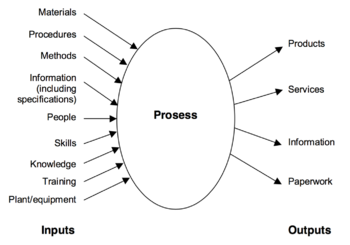Quality control
Defects and errors in construction projects have been subject to attention in the medias and debates through the years. There is a general conception of
SKRIV DETTE ABSTRACT OM NÅR DU ER DONE
When managing conformance in construction projects an important aspect is quality control (QC), in order to assure high quality of outcome as well as in the project process. Thus the main purpose of performing QC is to determine if the established quality requirements and the project objectives are achieved. Furthermore an important part of QC is to investigate the causes of the arising problems, as well as finding ways to eliminate unsatisfactory performance.
As quality control techniques are needed in order to perform QC, two quality control techniques are introduced in this article. The first technique introduced is “cause and effect diagrams”, which focus on correcting the non-conformance after it has occurred, which is the focus of most quality control techniques. The idea of the technique is to find the roots to the problem and visualizing them by creating a fish bone diagram. The possibilities and limitations to the technique will be clarified. “Statistical process control” is a tool to prevent unsatisfactory performance and is the second technique introduced in the article. This technique deals with statistical analysis of data obtained from similar projects, and control chart can be used to determine if the outcome of the analysis is tolerable. As this technique requires data logging of previous projects, the possibility of implementation of the technique in a construction process is discussed as the complexity and conformance requirements in construction projects can make the technique less effective even though the construction process is a repetitive process overall.
Contents |
Definition of Quality Control
Quality Control (QC) is a part of quality management of construction projects, and to be more exact QC is at the heart of conformance management. The aim of QC in construction projects is to assure high quality of the construction being built and the processes of the project. In this content the definition of “high quality” means fulfilling standards and the established quality requirements in the specific project [1].
Something about corrective and predictive QC.
Product quality control
QC of af product concerns the quality of the outcome of the different processes in the construction project. It can be a product of a process in the design phase as well as in the construction phase. Examples of defects that product QC deal with are listed:
- Missing information in drawing material
- Moisture damage for a construction element
- Cracking in a welding
Process quality control
Examples of process QC control is:
- Controlling the temperature of the concrete during casting
Performing quality control
| Primary inputs | Primary outputs |
|---|---|
|
Progress data Deliverables Quality plan |
Quality control measurements Verified deliverables Inspection reports Change requests Corretive actions |
In order to perform QC, tools and inspection procedures are needed. These inspection procedures and QC tools are specified in the part of the quality management called quality assurance [3]. The primary inputs and outputs of performing QC in construction project given by the standard DS/ISO 21500 [2] are shown in Table 1. Here it can be seen that QC has a high dependency of good planning, as the primary inputs is a result of planning the quality in the project. The primary output shows that QC is not only about asking "have we meet the requirements" but documentation, communication and analysis is important when performing QC.
The standard DS/ISO 2150 [2] states that QC should be performed during the whole project life cycle and that it includes following aspects:
- Monitoring the quality of the processes and detect defects.
- Analysis of the causes of defects and non-conforming performance.
- Identify ways to eliminate unsatisfactory performance by preventive actions and change requests.
- Communication of the change requests and necessary corrective actions to project organization members.
Karins definition: (Den store report)
John S. Oakland states:
Something about recent practice (digital tools for inspections) and classic quality control techniques... The focus on predictive quality control!!!
Continuous control, Early quality control, Quality control at delivery
Corrective Quality Control
Most techniques focus on correction of non-conformance
Corrective Quality Control techniques
Cause and effect diagrams
Pareto analysis
Control charts
Preventive Quality Control
Preventive techniques
Statistical process control
Implementation of preventive techniques
Monitoring
Digital tools for inspections
Sensor systems
Radio Frequency Identification (RFID)-based quality management system, which functions as a platform for gathering, filtering, managing, monitoring and sharing quality data.
Discussion
What is good quality control
Benefits of good quality control
Consequences of poor quality control
Limitations
The requirements have to be clear (from the client to the designer (architects and engineers), as well as to the entrepreneurs and craftsmen
Operationally orientated and doesn't take factors as customer satisfaction into account
Project specific control
Time – there have to be time to do it.
Knowledge – people have to understand the process in order to control them.
Not enough ressources from the designers
